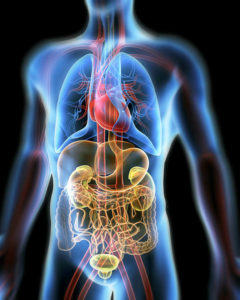
According to the International Diabetes Federation (IDF) in 2021 an estimated 537 million people had diabetes, and this is projected to rise to 642 million by 2040. Cardiovascular diseases (CVD) are the leading cause of death globally, claiming 17.3 million lives annually. By 2030 almost 23.6 million people may die from one of these conditions. The current data and projections are stark and call for stricter measures to combat this silent pandemic. Diabetes and CVD share a common denominator – metabolic dysregulations.
When do metabolic dysregulations begin?
Metabolic dysregulations begin with unhealthy physical and dietary lifestyles (modifiable risk factors) and genetic predisposition (non-modifiable risk factors). Poor nutrition contributes to high blood lipids (hyperlipidemia) and insulin resistance that causes high blood sugar (hyperglycemia). Excess glucose in the blood alters metabolism and signaling in cells and negatively impacts several processes.

A high intake of fat or carbohydrates leads to excess fat in the form of triglycerides (TG). On the contrary, excess plasma-free fatty acids (FFA) are produced during fasting, which can get into non-adipose tissues (e.g., liver, heart, pancreas, and muscle) as TG and promote cellular dysfunction and death. This event has different consequences depending on the organ where the excess fat is stored.
For example, excess TG in the liver results in a build-up of fat in the liver cells (hepatic steatosis), and excess TG in the pancreas is related to impaired insulin production, β-cell dysfunction, and apoptosis (cell death). Excess fat in the heart muscles causes cardiomyopathy (heart muscle disease), coronary heart disease, and sudden death, and excess TG in the skeletal muscles is associated with insulin resistance and impaired glucose uptake. Consequently, alterations in lipid metabolism are both the cause and consequence of insulin resistance.
Insulin has a principal role in the development of CVD. Insulin essentially provides an integrated set of signals that balance nutrient demand and availability. Insulin resistance contributes to oxidative stress, an altered inflammatory response, endothelial (blood vessel lining) dysfunction, and the buildup of lipids in non-adipose tissue. All of these processes help perpetuate metabolic dysregulation associated with the development of diabetic cardiomyopathy.

What is the origin of the alarming increase in type 2 diabetes and CVD?
Studies have reported that variations in DNA and changes in lifestyle factors contribute independently to CVD development. However, attempts to change adult lifestyles to reduce risk factors have failed to stop or slow down the current alarming rise in type 2 diabetes and CVD globally.
When does it all begin?
We believe that an unhealthy lifestyle triggers the process that begins early in life, during fetal development. There is substantial evidence supporting the role of exposure to environmental risk factors before and after birth in determining lifetime disease susceptibility. For example, newborns of pregnancies complicated by gestational diabetes mellitus (GDM) have an increased risk of developing type 2 diabetes and CVD in adult life.
Where should we set the goal of prevention strategies? What do we need to know?

Healthy lifestyle modifications involving diet and exercise can reduce CVD risk, and the ongoing public health efforts in this direction should be emphasized. In addition, our focus of interest should be to evaluate the impact of an unhealthy metabolic pregnancy on the offspring. Current data suggest that a fetal response to excess maternal nutrition can be considered a vicious intergenerational cycle, with consequences for the offspring extending far beyond the neonatal period. Perhaps this is the key to understanding the increased incidence of metabolic diseases such as type 2 diabetes and CVD.
These are some questions that we would like to answer in our line of research. As a team, we are working to find out how an adverse metabolic environment during pregnancy metabolically affects the baby, leaving a metabolic footprint that will affect their health in the future with an increased risk of CVD and type 2 diabetes.
What is next? Understanding metabolic communication and programming

It is clear that there is an orchestration of events that need to happen to develop diabetes and CVD, so communication is essential. In the last 15 years, our understanding of how cells communicate with each other has changed to recognize the role of extracellular vesicles (EV) in communication within and between cells in normal and disease conditions, but it is only beginning to be understood. Based on the available data, we suggest that EV signaling plays a significant role in controlling critical processes in cell metabolism, including insulin signaling, glycolysis (glucose breakdown), and nutrient uptake.
We are very proud of the impact of this article on the scientific community, evidenced by the number of citations and views on the journal website. Our research program has investigated the metabolic alterations in diabetes and their links with endothelial cell dysfunction and CVD for many years now. We established a multidisciplinary team including a highly collaborative program between the University of Concepcion (Chile) and the University of Queensland (Australia) to address our research questions from different angles, which has generated new data to support our program. Being a researcher requires dedication, hard work, and inspiration; thus, the recognition of our articles gives us an extra push to keep developing our research.
Our research program is supported by the National Health and Medical Research Council (NHMRC 1195451), Fondo Nacional de Desarrollo Científico y Tecnológico (FONDECYT 1170809, and 11190522), and Diabetes Australia.
Comments